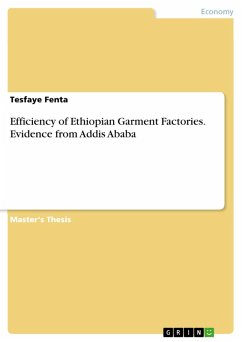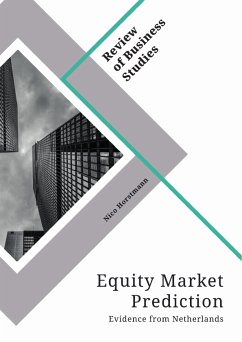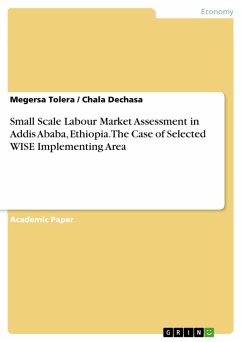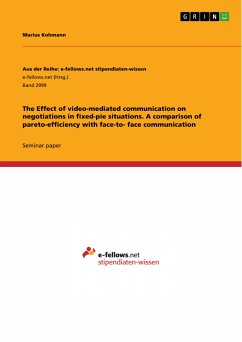Master's Thesis from the year 2016 in the subject Economics - Job market economics, grade: 1.0, , course: Development Economics, language: English, abstract: The study measures the level of technical efficiency and its determinants in Ethiopian garment factories. The study employs both Data Envelopment Analysis (DEA) and Stochastic Frontier Analysis (SFA) to compute the technical efficiency of Ethiopian garment factories and Tobit model to examine the determinant of technical inefficiency of the garment factories based on a data set of ninety four garment factories over the period of 2014-2015. The study used Akaike Information Criteria (AIC) to opt for the best function between Cobb-Douglas and Translog functions. The result reveals that Cobb-Douglas production functions better explains the production behavior of garment factories. The DEA estimation shows that the mean technical efficiency of garment factories was around to be 0.43 while such figure in SFA goes as high as 0.89 and the research indicated that export do not promote technical efficiency Ethiopian garment factories. The research indicated that DEA is more appropriate for small garment factors while SFA is more suitable to large and medium garment factories. The result from DEA model indicates that educational level of production manager, local fabric sourcing, collaboration with similar factories and membership status with Ethiopian textile and garment institute have positive contribution to efficiency. On the other hand wage rate of semi/unskilled labour, years of establishments, number of production line, educational level of the manager and size have a negative effect to efficiency. While the result from SFA indicates that wage rate of semi/unskilled, year of establishment, size and educational level of the manger have the positive contribution to technical efficiency. On the other hand owners citizenship and collaboration work with similar factories are a negative contribution to SFA technical efficiency. The research recommends that output can be increased by improving the technical efficiency of Ethiopian garment factories. To do so, for large and medium scale firms attention should be given to improve the wage rate of semi/unskilled labour, educational level of the managers and minimize collaboration with similar firms while educational level of the production manager, local fabric sourcing, collaboration with similar factories, and membership status of textile and garment institute should be improved for small firms.
Dieser Download kann aus rechtlichen Gründen nur mit Rechnungsadresse in A, B, BG, CY, CZ, D, DK, EW, E, FIN, F, GR, HR, H, IRL, I, LT, L, LR, M, NL, PL, P, R, S, SLO, SK ausgeliefert werden.









